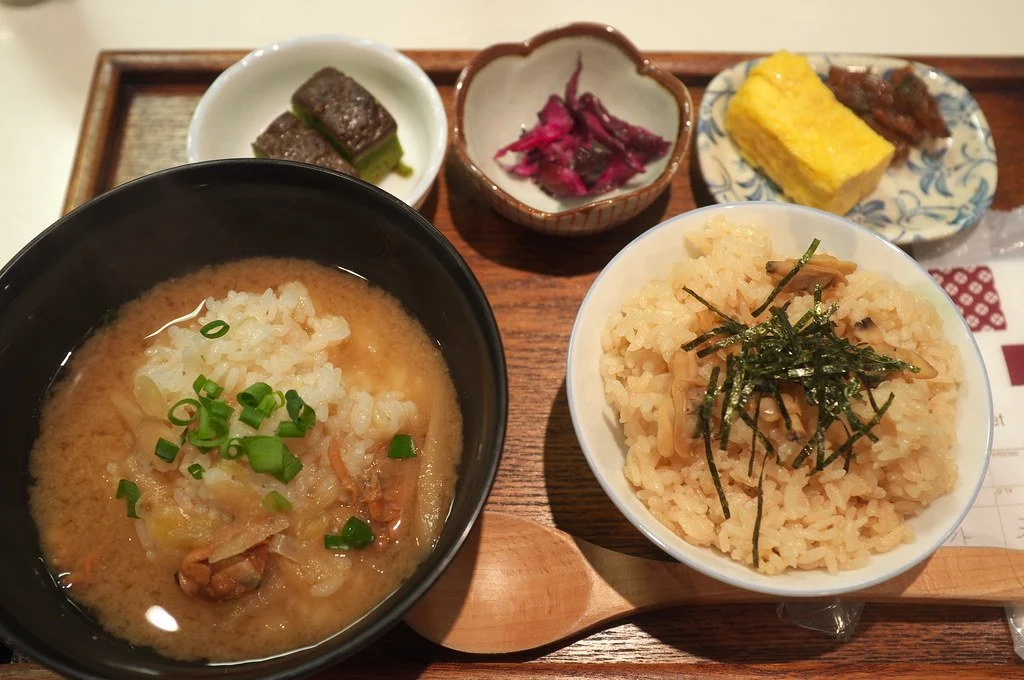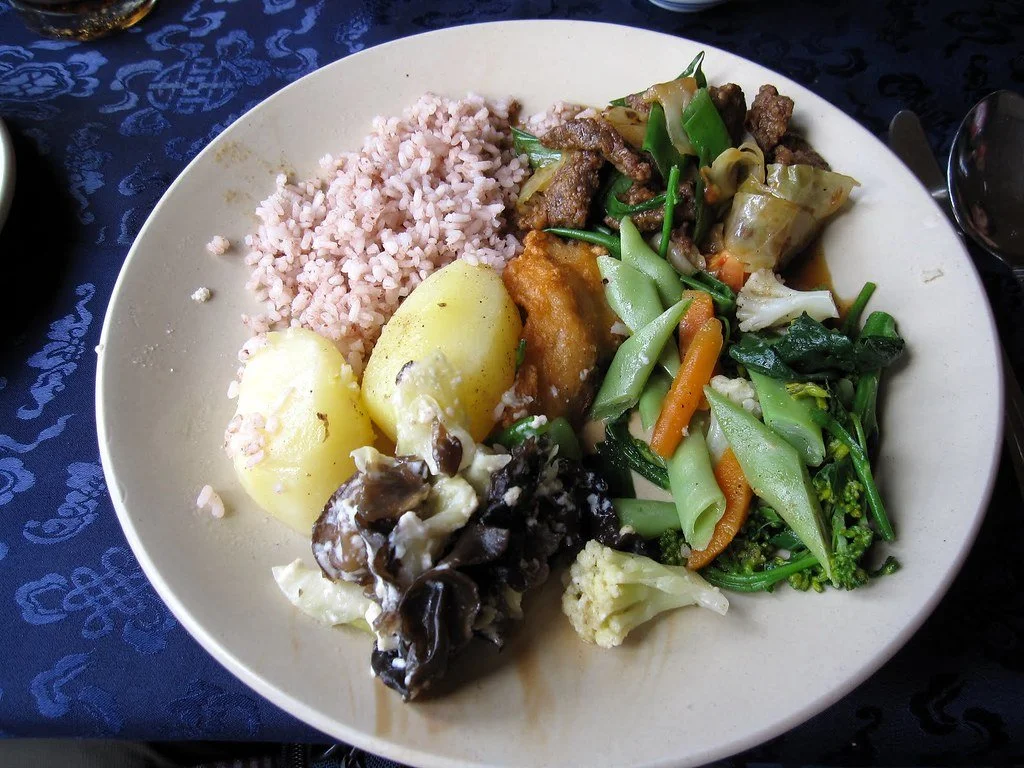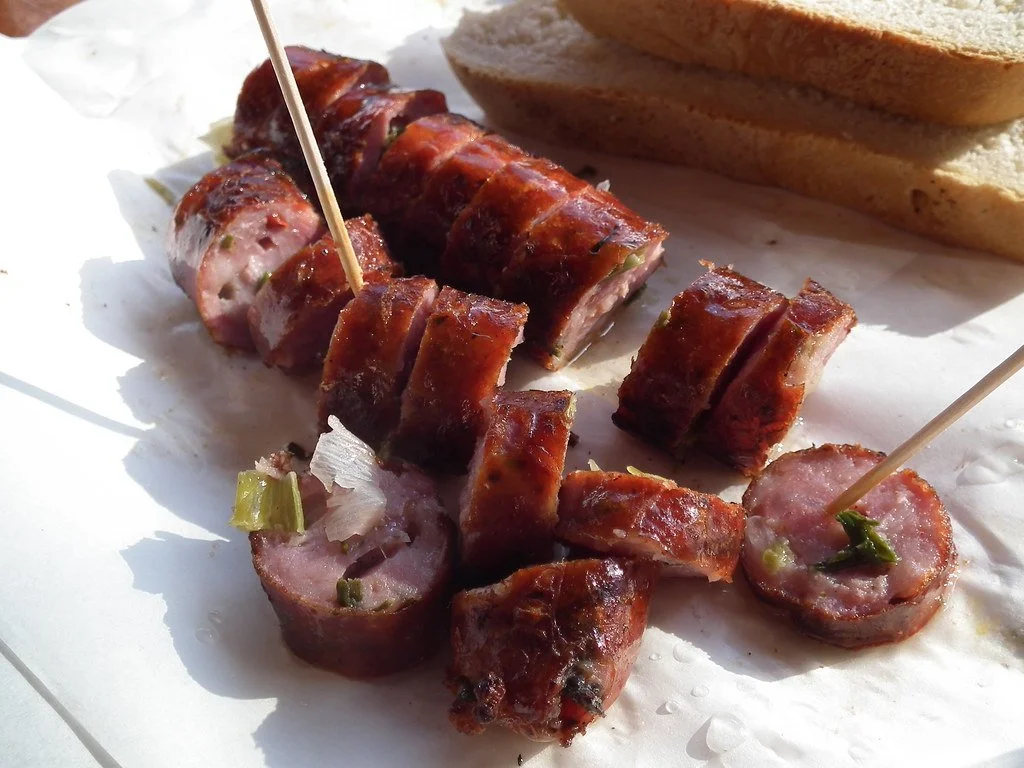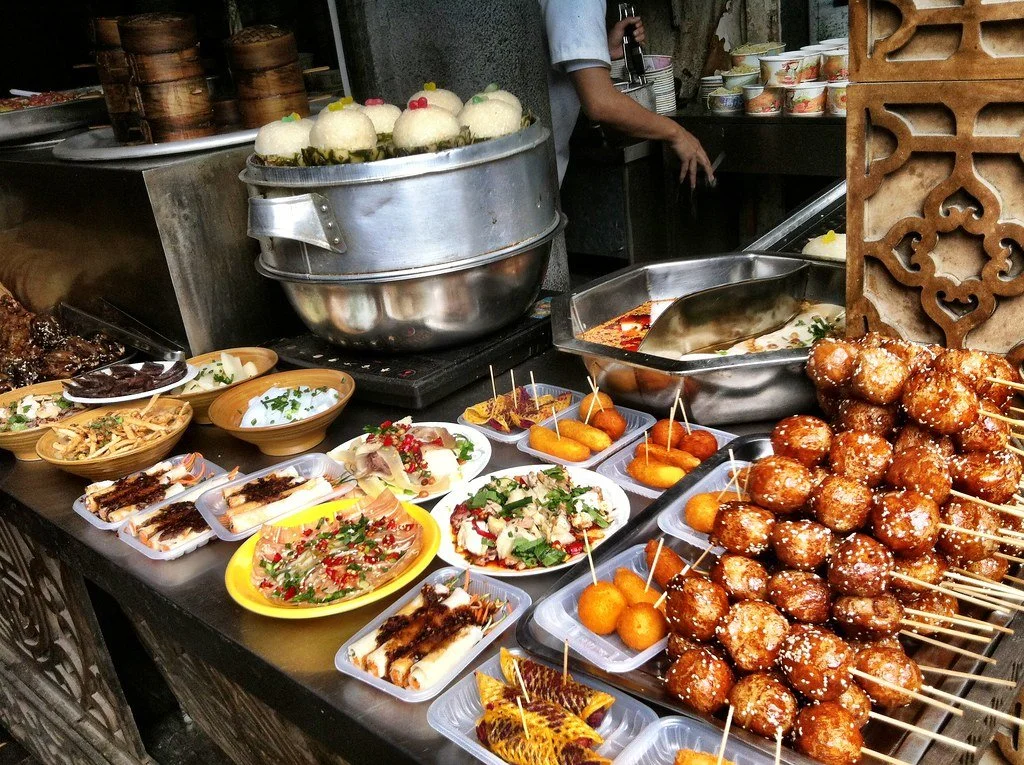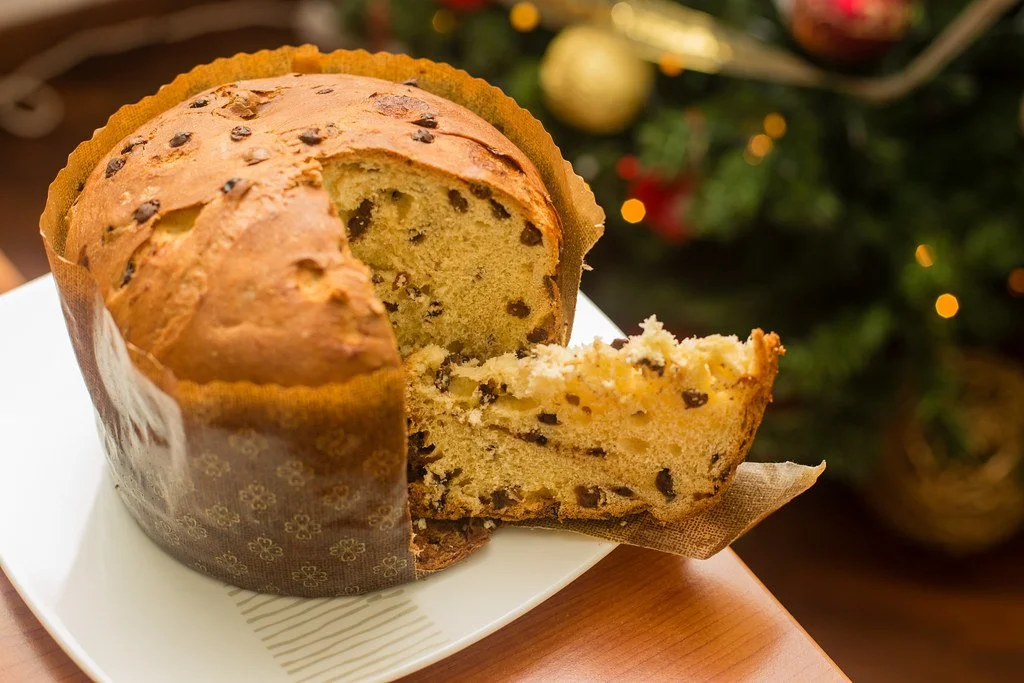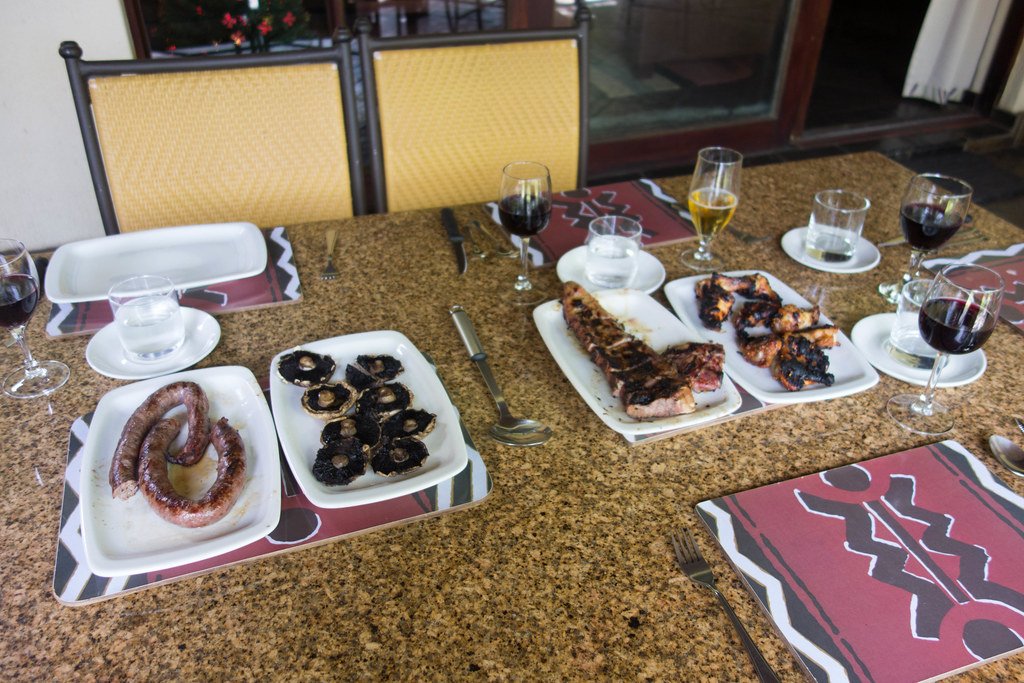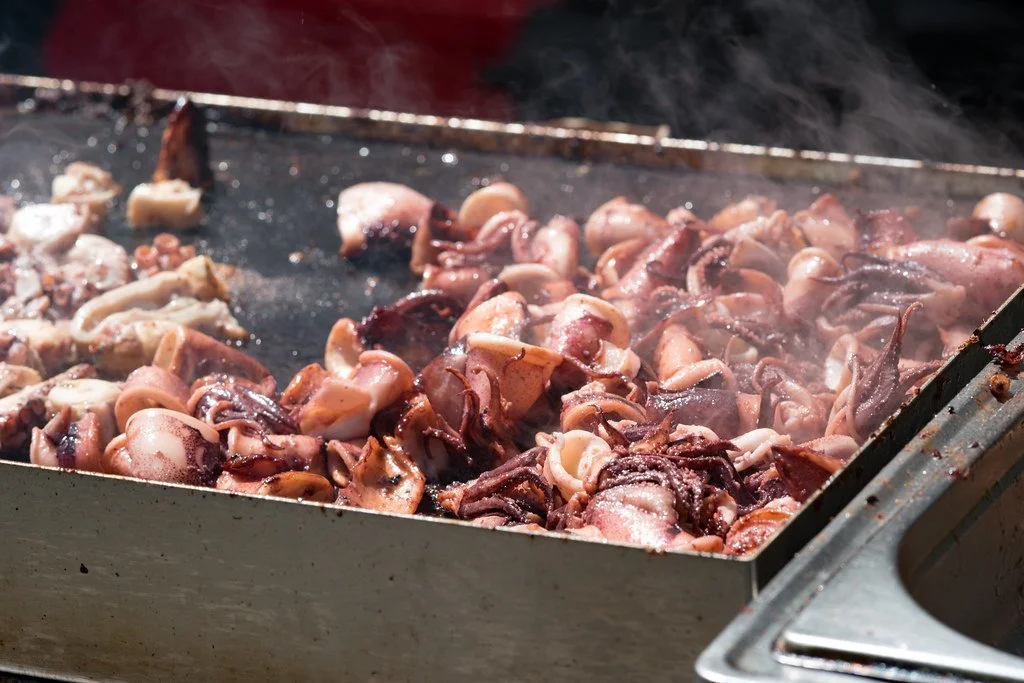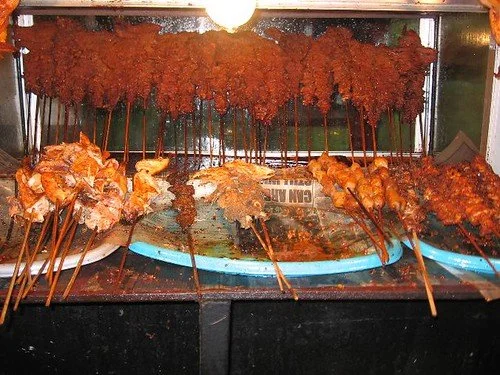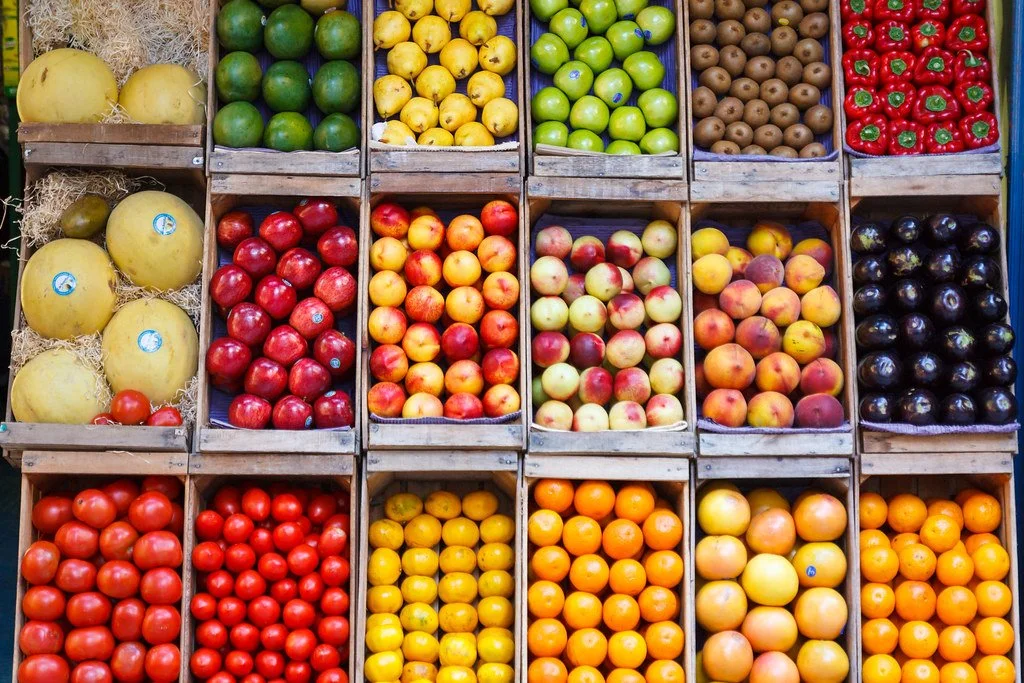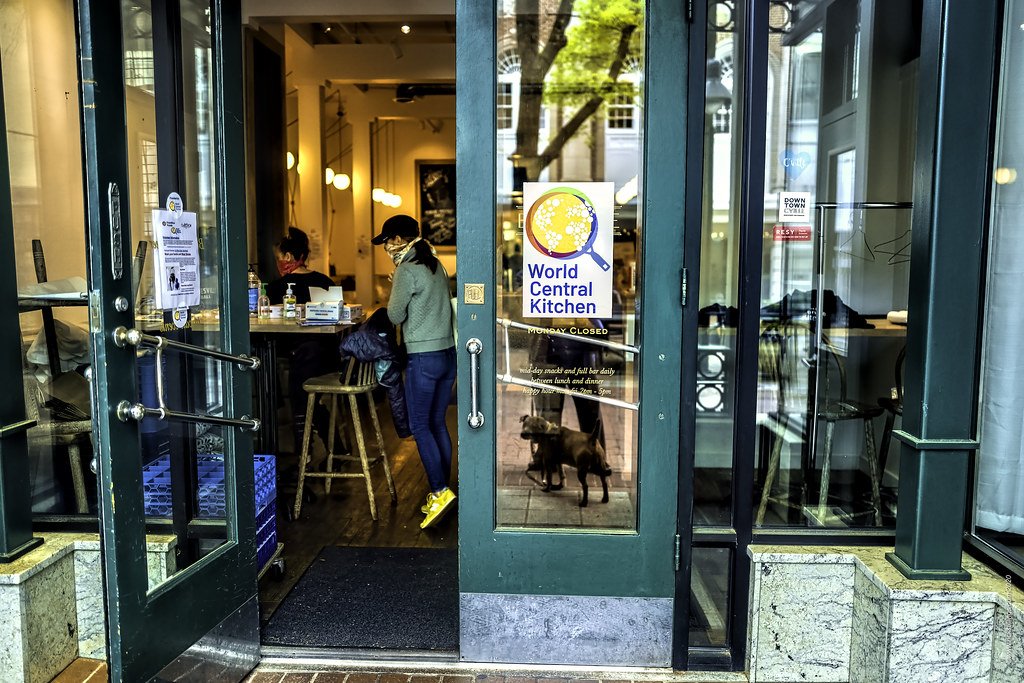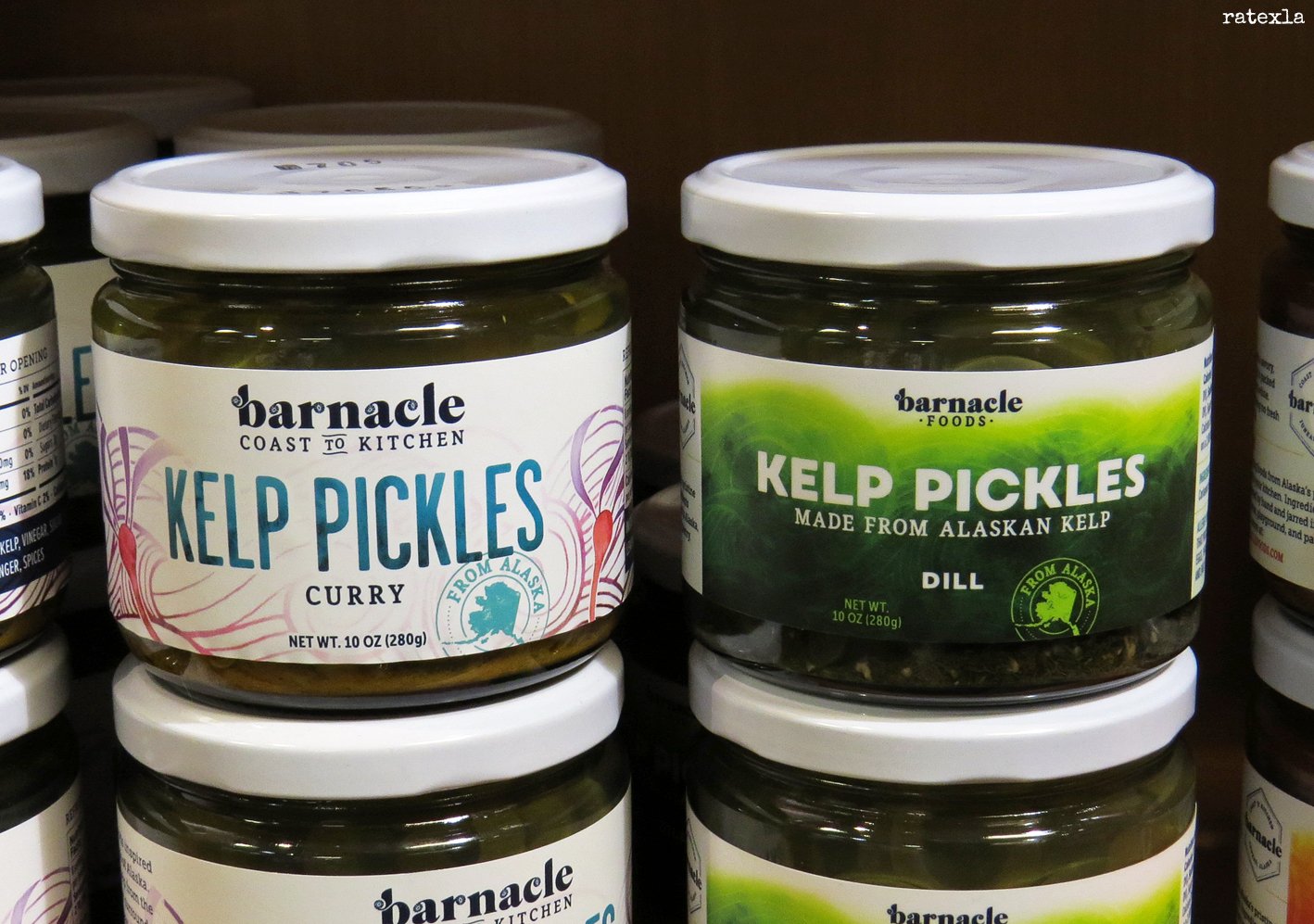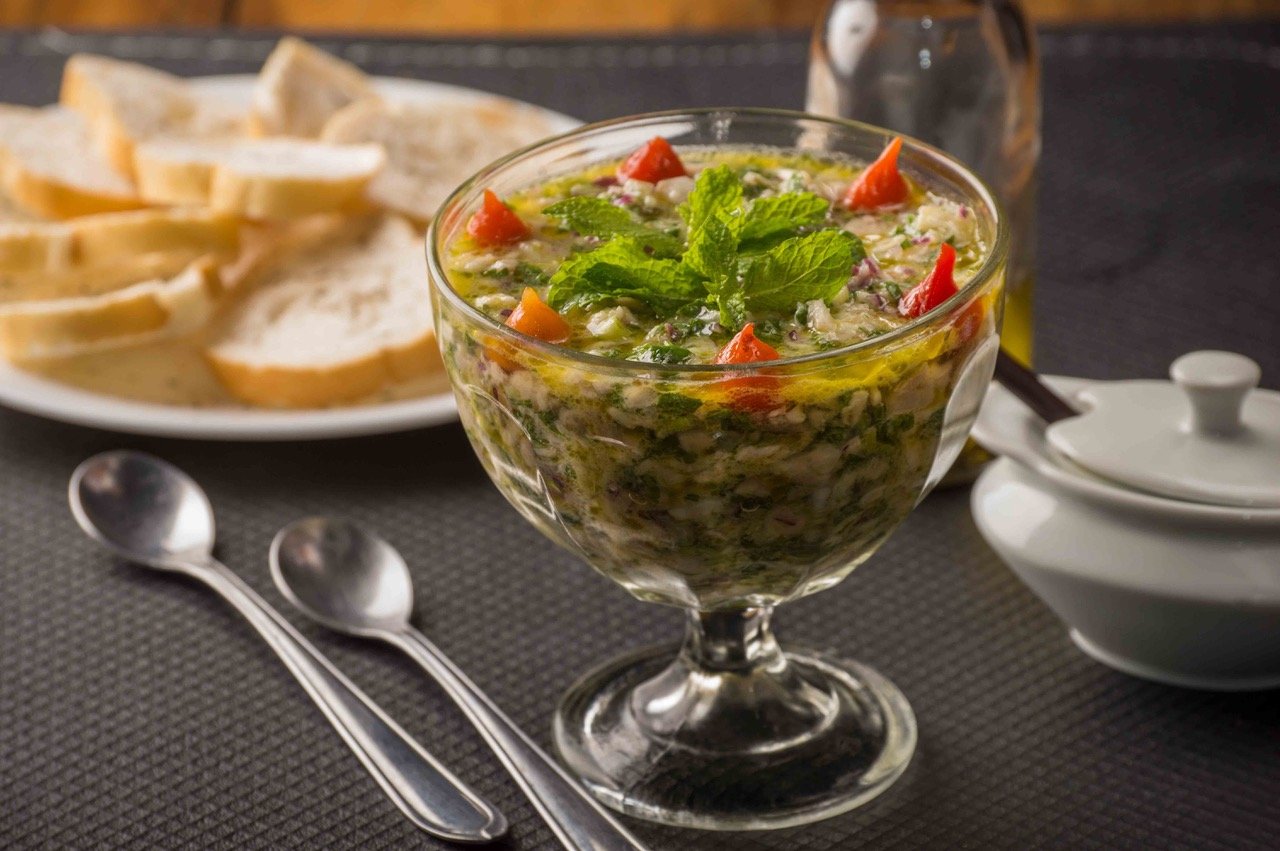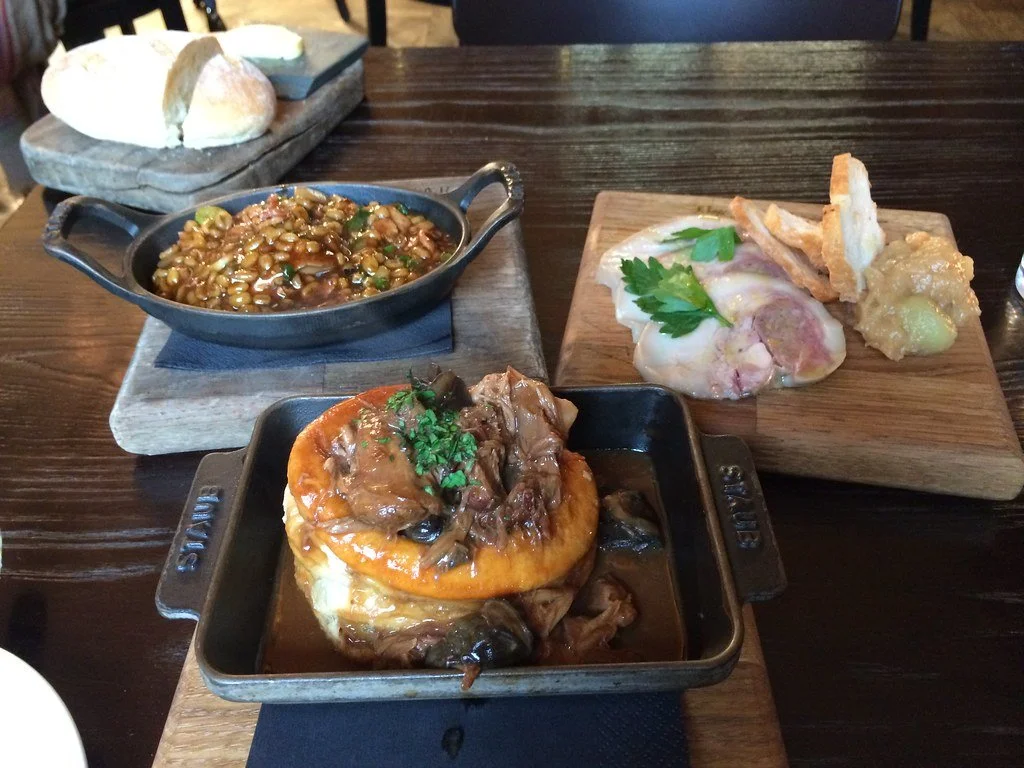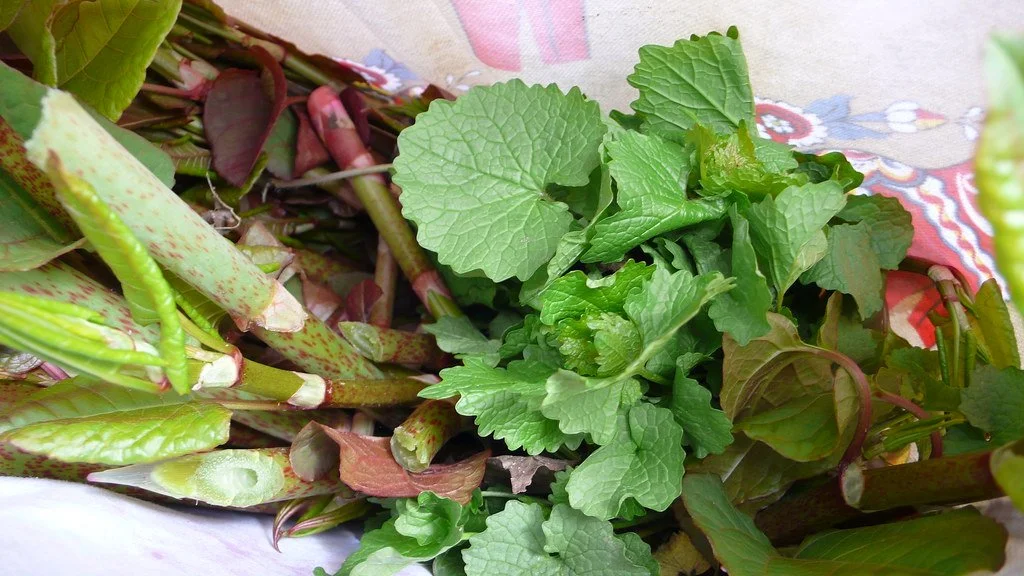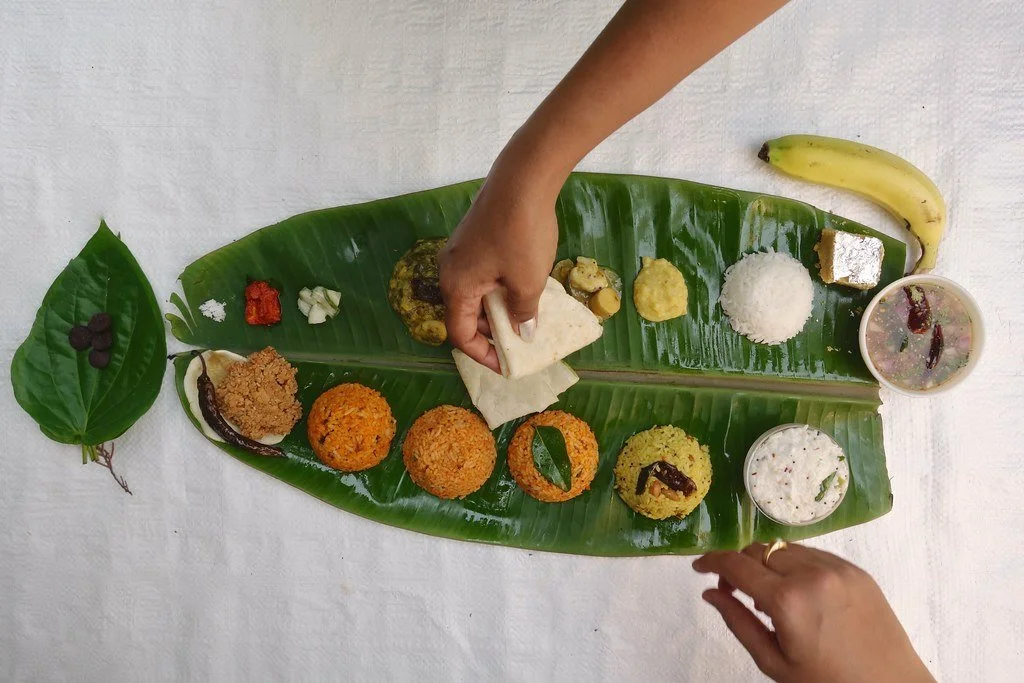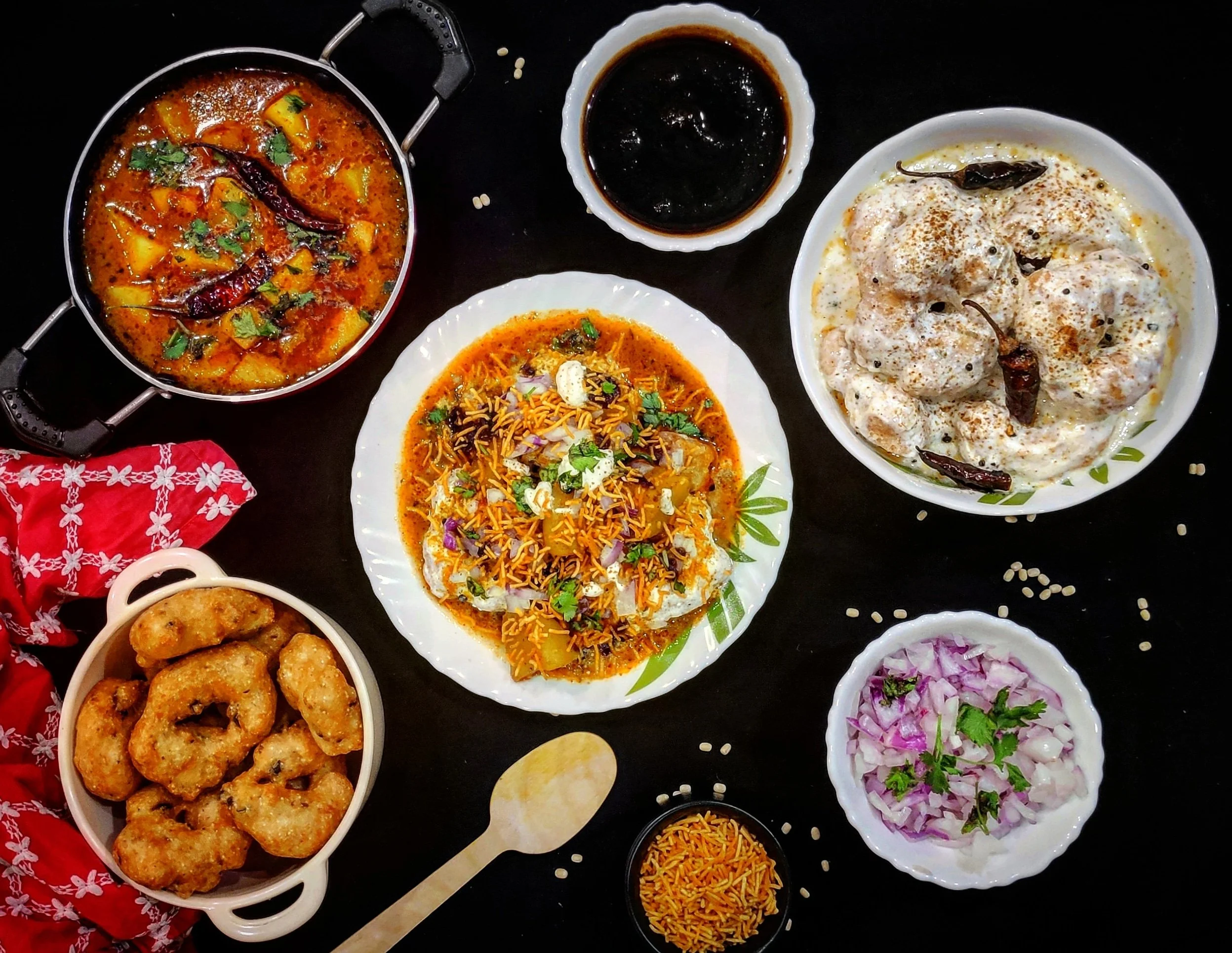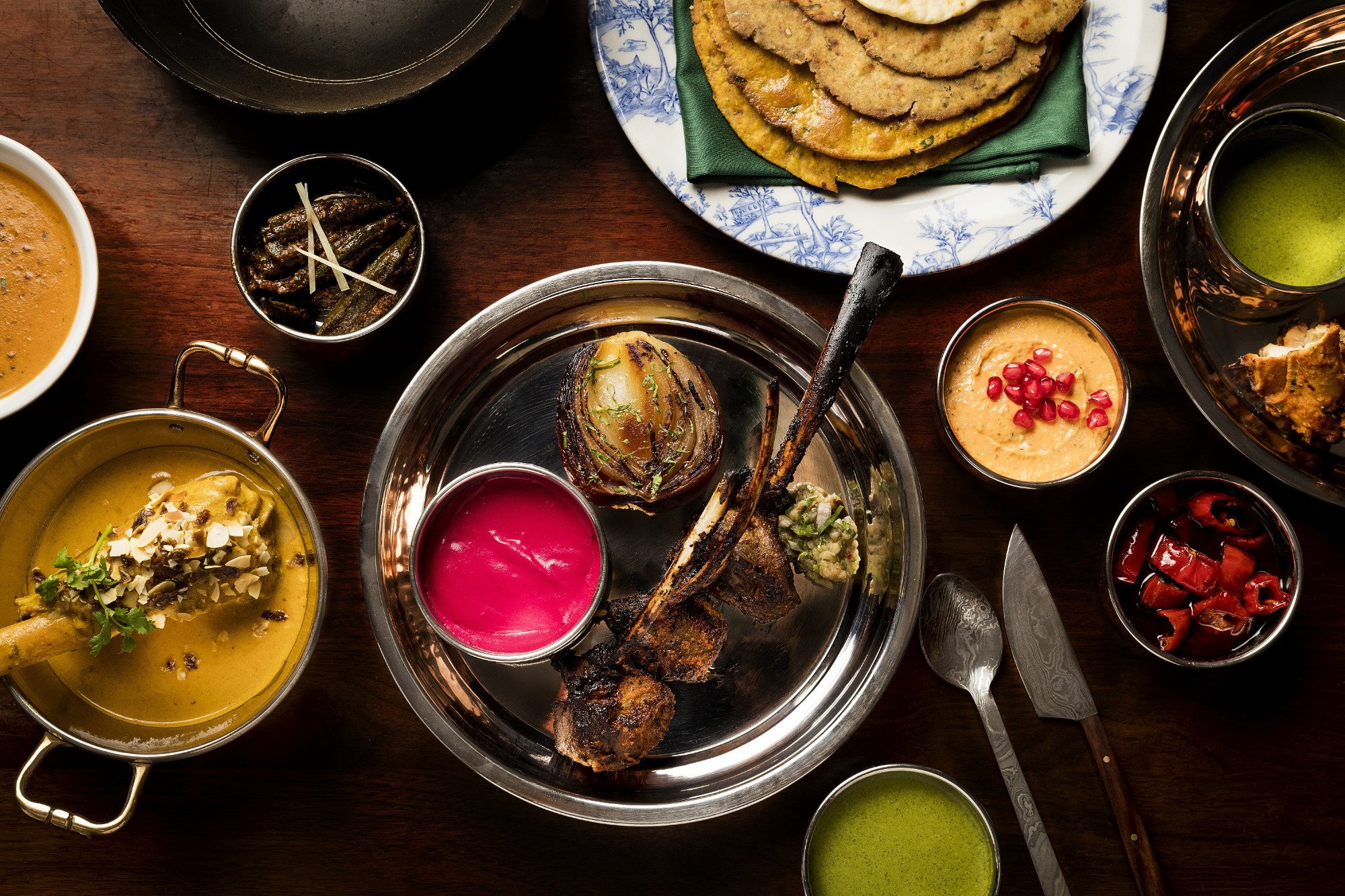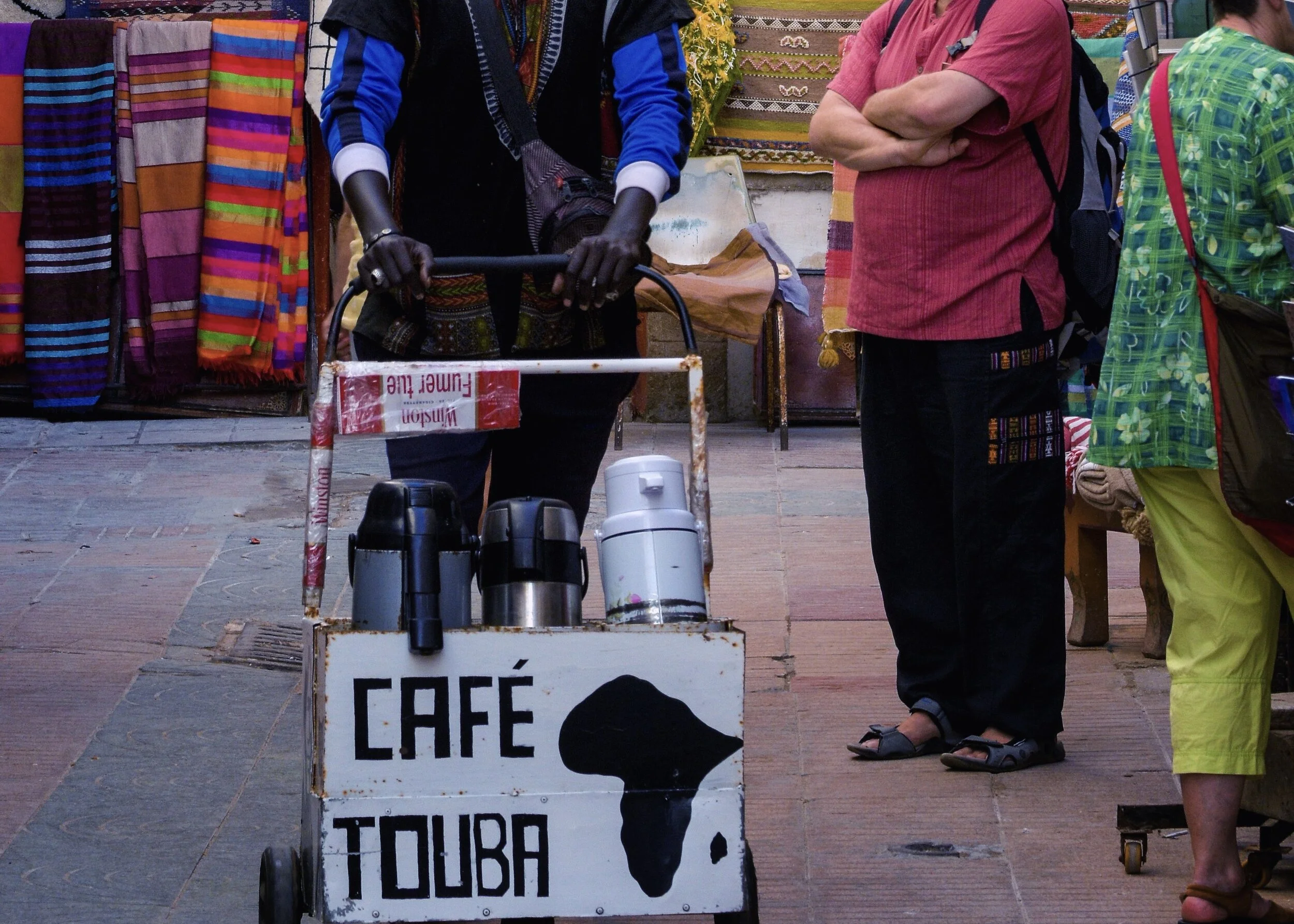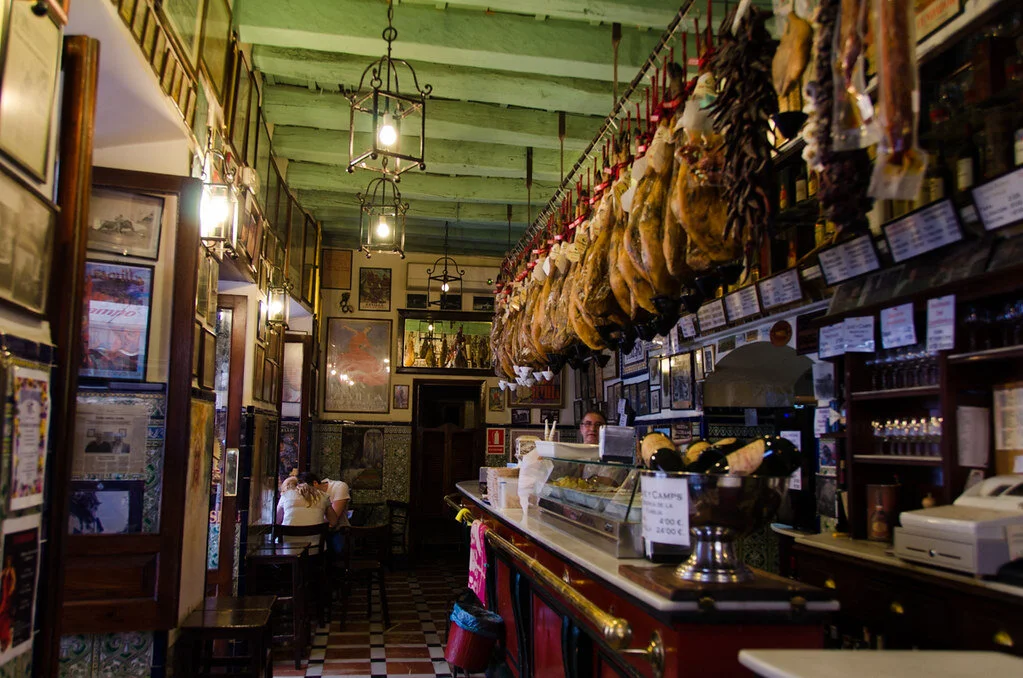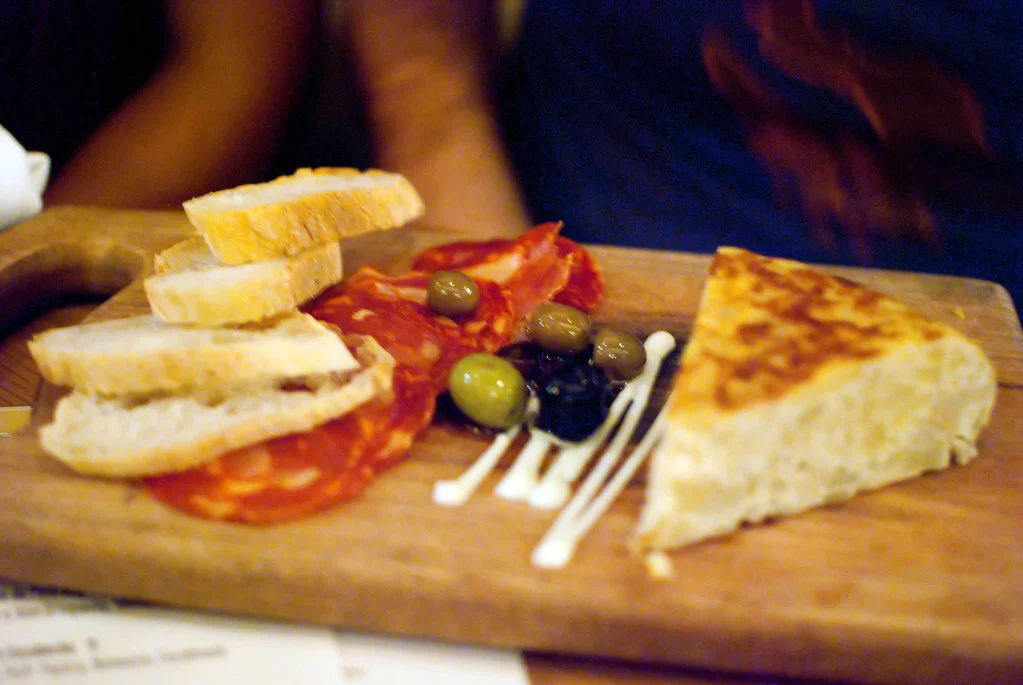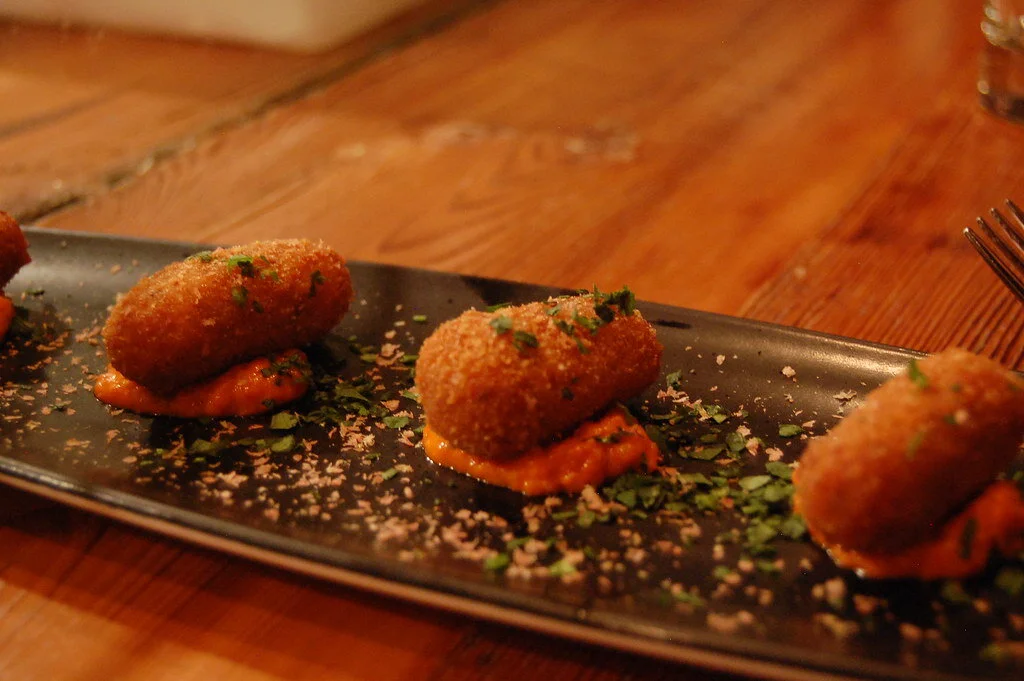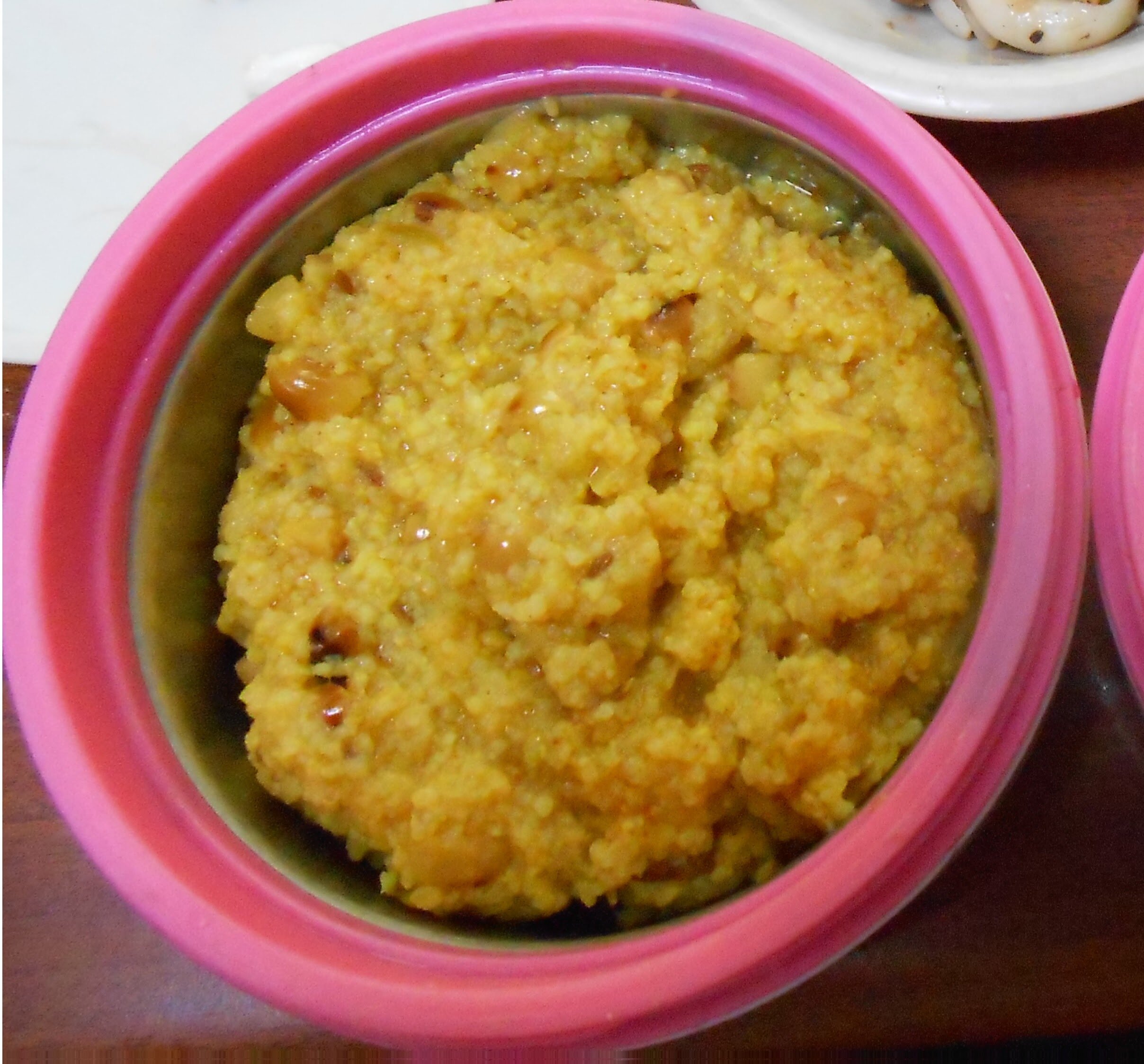Tasting local foods is one of the most interesting things about travel. Learn about some hallmark culinary traditions of these diverse regions.
Meat and veggies simmering in a pan. LoKan Sardari. CC BY-NC-SA 2.0.
My favorite part of traveling is exploring and tasting local food dishes with culturally significant roots within the region I’m visiting. When I traveled to London, I explored the local pubs and decided fried fish wasn’t that bad. The local aspect of dishes excites me, and I would much rather dine in a family-owned restaurant than a tourist trap.
This serves as a bite-sized serving of the infinite variety of food on this massive planet—not a definitive recounting of the delicious and culturally significant dishes on Earth, but rather these regions serve as starting points that lead to culinary exploration.
1. Kanto Region - Japan
Fukagawa meshi and other side dishes. Nekotank. CC BY-ND 2.0.
Japan is divided into eight regions, each of which has its own culturally significant dishes. The Kanto region is home to the capital city of Tokyo, and the flavors are stronger than the other regions’ food. Fukagawa meshi is a dish that originated in the Edo period (approximately 1603-1867) and consists of clams and leeks cooked in a miso stew. The dish was a product of abundant fishing in the area and quickly became adopted by locals. The Kanto region became a hub for industry during the Edo period, and the cuisine naturally started evolving to incorporate other region’s influences.
2. New South Wales - Australia
Kangaroo Meatballs with quandom jam. by denisbin. CC BY-ND 2.0.
Prior to the 18th century, the Indigenous population of Australia subsisted on hunting local wildlife, including kangaroos and wallabies. Once Australia became a continent-sized prison for the British Empire, the cuisine quickly modified to have influences of the colonizer diet. Today, Sydney cuisine reflects the multi-cultural population that lives there. Take-away foods and fast food are staples of Australian culture, and Sydney specifically is a melting pot of local and international foods. Fish and thick cut fries are common. The cuisine of Australia is heavily influenced by Western diets but still utilizes ingredients that Aussies connect with, including eating their national animal, the kangaroo—a dish low in fat, delicious, and popular in local restaurants.
3. Phobjikha Valley - Bhutan
Bhutan dish with potatoes and vegetables. By rapidtravelchai. CC BY 2.0.
This region is home to many rich cultural events, such as the Black-Necked Crane Festival, which honors one of the region’s most culturally significant animals. This festival is held annually on Nov. 12, where cranes can be seen flying at high altitudes, accompanied by traditional dancers dressed in black-necked crane attire. The local cash crop is potatoes, which are the main ingredient in kewa datshi, a traditional dish prepared by thinly slicing potatoes and sauteeing with cheese, butter and chiles. The dish is relatively new to the region’s culture; in fact, potato consumption in Bhutan was near non-existent until the 1970s. Until then, it was mainly used as an export crop. Due to the region’s altitude and climate, insects do not interfere with the local’s potato crops, which eliminates the need for harmful pesticides.
4. Metsovo - Greece
Skewered sausages. PACO POMARES. CC BY-NC-SA 2.0.
Situated to the north of Epirus, Greece, this gorgeous small town is home to some of Greece’s most delicious industries: wine and cheese. The history of this town is fascinating, with it being the center of production for sheep wool traded as far as Northern Africa during the 17th and 18th centuries. The region is most popular during the winter season for its spectacular mountains and beautiful streams. Venturing off the beaten path, one can find themselves entranced with gorgeous forests, filled with statues, 19th-century architecture and natural springs supplying fountains. The local cuisine has an emphasis on dishes with rich flavors like sausages and ruffage, as well as a nice glass of wine to pair with it. Extra virgin olive oil is a heavily used condiment that could be added to multitudes of things, including toasted bread and other dishes.
5. Chengdu - China
An assortment of Chengdu Food. sinosplice. CC BY-NC 2.0.
Chengdu, China is a so-called “Party City,” according to the Los Angeles Times. While it is true that Chengdu has more teahouses and bars than Shanghai, it’s also home to many local dishes, specializing in chiles and peppercorns. One dish, dan dan mein (which Chengdu is credited for making), utilizes both in order to achieve a very spicy broth. Chengdu’s local tea culture is also very important, since the city was once a starting point for the Silk Road, offering many opportunities to create and enhance cultural staples. Although not culinary-specific, the city is a hotspot for LGBTQ+ travelers and natives, combining influences from the local party scene and the Queer community.
6. Soca Valley - Slovenia
Panettone with chocolate chips. Nicola since 1972. CC BY 2.0.
Slovenia is right in the center of four surrounding cultural influences; the Balkans, Alpines, Mediterranean and Pannonian flavors are all present in Slovenia’s dishes, and each is broken down into distinct ‘genres’ of food. The Alpine mountains are home to the cows and sheep that graze and produce milk, used for cultural dishes like žganci (literally translated as mash). The expansive meadows let honey bees run rampant to produce fresh honey. To the east of Slovenia, there is a vast amount of wheat fields, used to prepare a litany of different dishes and thermal springs that allow for fresh drinking water. The most popular fish is sea bass, and according to popular sentiment in the region, “a fish must swim three times, in water, oil and wine.” By utilizing hard harvested salt, Slovenia’s population takes its local cuisine very seriously.
7. Cape Town - South Africa
Braai at a meal. Kent Wang. CC BY-SA 2.0.
South Africa’s cuisine can be summed up with the term “melting pot,” since this region contains a mixture of Asian, European and Indigenous cultures within their food. Braai, an almost universally utilized meat preparation method in Southern Africa, is prepared by digging a firepit, providing meat and setting it ablaze. The practice is adjacent to America’s cultural touchstone of “barbecue,” although a key difference is that braai fires stay lit throughout the celebration as participants enjoy everyone’s company. Indigenous populations prioritized beef as a high-value food, and today, many South Africans still utilize foods from their Indigenous past. Colonialism severely altered the landscape of South African cuisine by bringing in an enslaved workforce from across Asia, which in turn brought their own cultural roots. The introduction of spices like nutmeg and allspice and the influence of European culture altered the cuisine further. Fermented beer is also popular, with a common practice being offering someone homemade beer as they enter your house.
8. Sicily - Italy
Italian cassatelle drizzled with chocolate. JohnDiP. CC BY-NC-SA 2.0.
Across the Mediterranean is the island of Sicily, a region known for its famous seafood dishes, sweets and, of course, pasta. The island restaurants have the opportunity to catch fish from the surrounding Mediterranean, specializing in tuna and freshly caught sardines. Pasta con le sarde is one of Sicily’s most popular dishes, utilizing fresh fennel seed that grows abundantly in Italy and the sardines from the surrounding sea. The dish also reflects the region’s multicultural influences, such as including raisins and pine nuts adapted from North American travelers. Sicily’s sweet side is also on full display, with cannoli being a centerpiece in Sicilian culture. Made with sweet ricotta filling, the crust of the cannolis is made from a fried pastry.
9. Andes - South America
Cuy on skewers. Nestor's Blurrylife. CC BY 2.0.
The Andes Mountains are home to communities of Indigenous peoples who have worked to preserve traditional flavors and techniques. The foodstuffs of the Indigenous peoples were incredibly versatile. Corn and potatoes are still some of the most important aspects of Andes cuisine, accompanied by traditionally used meats such as llama and guinea pig. Another word for a guinea pig is “cuy,” which has been a staple in Peruvian culture since the Incas and is used on important occasions.
10. Prague - Czech Republic
The capital of the Czech Republic harbors many cultural influences within its dishes. Italian food has touched the landscape of cuisine in Prague, but there are still many delicious dishes with deep Czech roots. Czech cuisine doesn’t have lots of vegetables in its arsenal of ingredients, and the foods of Prague are “delicious, comforting, very filling and addictive.” Steak tartare, a dish that tops “Taste of Prague’s” list of snacks that pair well with beer, is raw minced beef served with an egg or condiments. Sausages are a very common food in Prague, as well as the greater Czech region, overflowing into Germany.
11. Central Ghana
Western Africa’s recipes are still being prepared in deeply culturally important ways. Dishes are typically very starch heavy, accompanied by heavily seasoned meats, like beef, fish and the most dominant form of red meat in this region, goat. Traditionally, West Africans didn’t eat much meat and instead opted for dishes with natural oils, but now locals mix various meats together in different aspects of dishes. Suya is also a very popular street food, taking meat and mixing it with spices, resembling a kebab flavor on a stick. Prior to Ghana’s independence in 1954, residents boycotted colonial goods, including tinned meat and biscuits, in an effort to lower the cost of living. This action, along with a demonstration at the governor’s estate, set the stage for Ghana to be the first Sub-Saharan independent country. Ghana is not concerned about dictating a national food, rather it embraces the diversity of the many cultural influences within the country.
“Ghanaians expect to encounter diverse ethnic foods when traveling through different ecological zones within their country,” said researcher Brandi Miller in her paper, “Food and Nationalism in Independent Ghana.” “They welcome this difference and consider it a source of national strength and an indication of their unique national character, which embraces diversity.”
12. Tropics - South America
Fruit in a market. Nico Kaiser. CC BY 2.0.
On the beaches of South America, some so-called ‘exotic’ fruits are common staples of local culture. Pineapples, mangos, papayas and dozens others can be found in the tropical forests within the region. The climate allows for a dizzying variety of local agriculture to be used in recipes, such as tostones, which are popular Latin American twice-fried sliced plantains. The Amazon Rainforest is also utilized to enhance local flavors, utilizing meats from turtles and capybaras to use for local cuisine. Nearer to the coast, seafood dishes like ceviche are common to see enjoyed on a sunny day on the beach. Other than fish and fruits, there is a wide variety of vegetables that are grown in the tropics that influence local cuisine, including corn, beans and sweet potatoes.
Clayton Young
Clayton is an aspiring photojournalist with a Bachelor's in Liberal Studies with a minor in History from Indiana University - Bloomington. In his free time, he enjoys hikes, movies, and catching up on the news. He has written extensively on many topics including Japanese incarceration in America during World War II, the history of violence, and anarchist theory.


